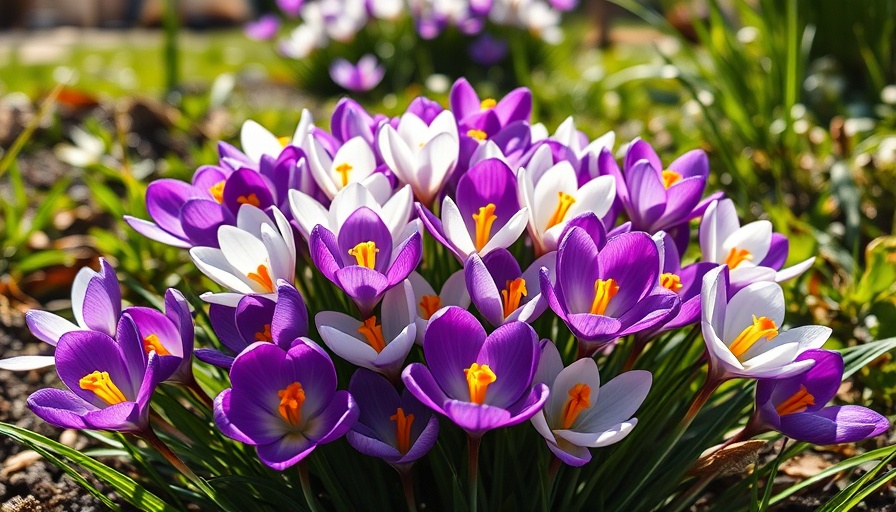
Bring Color to Your Winter Garden with Crocuses
As winter grips many regions, including Alaska, gardeners find themselves longing for vibrant colors to invigorate their outdoor spaces. While the charm of winter visits from moose and the picturesque snowfall may paint a beautiful scene, the absence of blooming flowers can leave a void in any green thumb's spirit. Enter the crocus—a hardy flower that can bring a pop of color to your garden even in the colder months. In this article, we explore 13 of the best crocus varieties that can brighten up your garden and some tips on what to consider when planting them.
The Allure of Crocuses: Why Choose Them?
Crocuses are remarkable not only because of their vivid colors but also due to their resilience. These blooms can withstand frost and typically emerge from the ground even when there's still snow on the ground. This makes them perfect candidates for early spring displays.
Among the varieties of crocuses, we find:
- Advance
- Barr’s Purple
- Blue Pearl
- Firefly
- Flower Record
- Grand Maitre
- Jeanne d’Arc
- Orange Monarch
- Pickwick
- Saffron Crocus
- Striped Bird
- Tricolor
- Yellow Mammoth
Variety is Key: Mix It Up with Cultivar Combos
If choosing just one variety feels too limiting, consider planting a mix of bulbs instead. These combinations can create richer visual experiences:
- Blue Moon Mix
- Purple and White Mix
- Rainbow Mix
Understanding Crocus Species for Garden Success
Crocuses vary in size and bloom times, influenced by their species. Here are a few notable types:
- Crocus chrysanthus: Often called the "snow crocus," these bloom earlier than other varieties and are perfect for a late winter display.
- C. tommasinianus: Named after a former Trieste mayor, its woodland origins offer a unique charm in gardens.
- C. vernus: Known as the Dutch crocus, this larger variety blooms a bit later, typically two weeks after C. chrysanthus.
- C. sativus: The saffron crocus, valued for its spice, blossoms in autumn.
- C. sieberi: Maturing from wild origins on Crete, this small and early-blooming crocus adds a unique Mediterranean flair.
Care Tips to Maximize Your Crocus Garden
Planting crocuses requires minimal effort, making them ideal even for novice gardeners:
- Location: Crocuses thrive in well-drained soil and full sunshine, so choose a spot that receives direct sunlight, especially in early spring.
- Timing: Bulbs are best planted in the fall before the ground freezes, allowing them to establish roots.
- Watering: After planting, a good initial watering helps with root establishment, but ensure the soil drains well to prevent rot.
- Companion Planting: Combining them with early-blooming perennials can create a stunning layered effect, enhancing visuals in your garden.
Future Trends in Gardening: The Rise of Pollinator-Friendly Practices
As awareness of ecological gardening grows, adopting practices that support pollinators is becoming essential. Crocuses are not just beautiful; they also serve as a crucial food source for early-blooming bees and other pollinators. Integrating them into a broader garden plan that emphasizes organic practices and biodiversity can elevate your gardening efforts. Future garden designs are steering towards more ecological balance, making crocuses the perfect candidates for blooming in such environments.
Conclusion: Transform Your Garden with Crocus Blooms
By incorporating crocus varieties into your garden, you can combat the winter blues and create a stunning early spring display. Whether you opt for solo bulbs or a vibrant mix, these hardy flowers are guaranteed to dazzle as they break through the frost and announce the arrival of spring. Ready to embrace these beautiful blooms? Start your crocus planting adventure this fall for a riot of color when the snow melts away!
 Add Row
Add Row  Add
Add 




Write A Comment